Related Research Articles
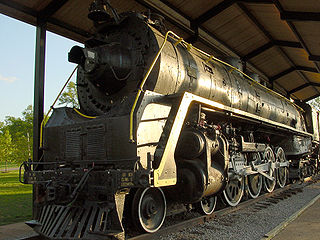
The Nashville, Chattanooga and St. Louis Railway was a railway company that operated in the U.S. states of Kentucky, Tennessee, Alabama, and Georgia. It began as the Nashville and Chattanooga Railroad, chartered in Nashville on December 11, 1845, built to 5 ft gauge and was the first railway to operate in the state of Tennessee. By the turn of the twentieth century, the NC&StL grew into one of the most important railway systems in the southern United States.

The Louisville and Nashville Railroad, commonly called the L&N, was a Class I railroad that operated freight and passenger services in the southeast United States.

The Alabama & Gulf Coast Railway is a Class II railroad owned by Genesee & Wyoming. It operates 339 miles (546 km) of track from the Pensacola, Florida export terminals, west of downtown, north to Columbus, Mississippi, with trackage rights along BNSF Railway to Amory, Mississippi. A branch uses trackage rights along Norfolk Southern from Kimbrough, Alabama west and south to Mobile, Alabama, with separate trackage at the end of the line in Mobile.
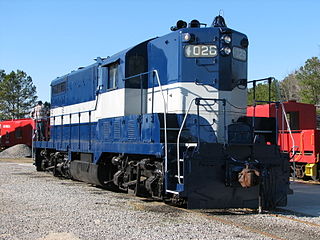
The Georgia Railroad and Banking Company also seen as "GARR", was a historic railroad and banking company that operated in the U.S. state of Georgia. In 1967 it reported 833 million revenue-ton-miles of freight and 3 million passenger-miles; at the end of the year it operated 331 miles (533 km) of road and 510 miles (820 km) of track.
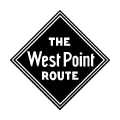
The Atlanta and West Point Rail Road was a railroad in the U.S. state of Georgia, forming the east portion of the Atlanta-Selma West Point Route. The company was chartered in 1847 as the Atlanta and LaGrange Rail Road and renamed in 1857; construction of the 5 ft gauge line was begun in 1849-50 and completed in May 1854. A large minority interest owned by the Georgia Railroad and Banking Company eventually passed under the control of the Atlantic Coast Line Railroad (ACL), which later acquired a majority of the stock.
The Montgomery and West Point Railroad (M&WP) was an early 19th-century railroad in Alabama and Georgia. It played an important role during the American Civil War as a supply and transportation route for the Confederate Army, and, as such, was the target of a large raid by Union cavalry in the summer of 1864, called Wilson's Raid. The railroad played an important role in this business, and it became a symbol to industrialization in the United States. The railroads make it possible to supply large military forces that were needed in order to take over and conquer the Southern part of the United States. During the early 19th-century, turnpikes, canals, and railroads all brought people to the west and more products to the east. There was an effort in Americans during this time to build a railroad that would link Georgia to trade with the Tennessee and Ohio areas, and the M&WP was a starting point in helping to accomplish this goal.
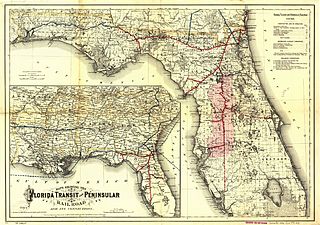
The Florida Central and Peninsular Railroad was the final name of a system of railroads throughout Florida, becoming part of the Seaboard Air Line Railway in 1900. The system, including some of the first railroads in Florida, stretched from Jacksonville west through Tallahassee and south to Tampa. Much of the FC&P network is still in service under the ownership of CSX Transportation.

The Plant System, named after its owner, Henry B. Plant, was a system of railroads and steamboats in the U.S. South, taken over by the Atlantic Coast Line Railroad in 1902. The original line of the system was the Savannah, Florida and Western Railway, running across southern Georgia. The Plant Investment Company was formed in 1882 to lease and buy other railroads and expand the system. Other major lines incorporated into the system include the Savannah and Charleston Railroad and the Brunswick and Western Railroad.

The Atlantic and Gulf Railroad was chartered in February 1856 by act of the Georgia General Assembly. It was also known as the Main Trunk Railroad. It traversed south Georgia from Screven to Bainbridge, Georgia. Construction began in early January 1859. Its construction was halted by the American Civil War. Construction began again after the end of the war and the line was completed to Bainbridge, Georgia by late December 1867. The route never reached all the way to the Gulf of Mexico as it had originally had intended. The company went bankrupt in 1877 and was bought in 1879 by Henry B. Plant and became incorporated into his Plant System. Its main line is currently operated by CSX Transportation. Throughout its history, the Atlantic and Gulf was closely associated with the Savannah and Albany Railroad Company and its successor the Savannah, Albany, and Gulf Railroad.
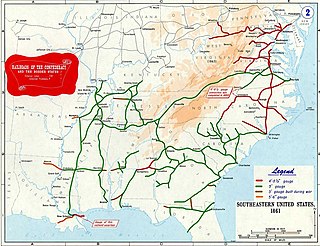
The American Civil War was the first in which large armies depended heavily on railroads to bring supplies. For the Confederate States Army, the system was fragile and was designed for short hauls of cotton to the nearest river or ocean port. The South had very little manufacturing or industrial capacity, and so during the war new parts were hard to obtain, and the system deteriorated from overuse, lack of maintenance, and systematic destruction by Union raiders.

The Mobile and Ohio Railroad was a railroad in the Southern U.S. The M&O was chartered in January and February 1848 by the states of Alabama, Kentucky, Mississippi, and Tennessee. It was planned to span the distance between the seaport of Mobile, Alabama and the Ohio River near Cairo, Illinois. On September 13, 1940 it was merged with the Gulf, Mobile and Northern Railroad to form the Gulf, Mobile and Ohio Railroad.

The Mobile & Girard Railroad was an Alabama railroad which was constructed in the mid-19th century; a portion of the line continues in operation under different ownership. The 26-mile (42 km) line was constructed with a track gauge of 5 ft.

The Pensacola and Atlantic Railroad (P&A) was a company incorporated by an act of the Florida Legislature on March 4, 1881, to run from Pensacola to the Apalachicola River near Chattahoochee, a distance of about 160 miles (260 km). No railroad had ever been built across the sparsely populated panhandle of Florida, which left Pensacola isolated from the rest of the state. William D. Chipley and Frederick R. De Funiak, both of whom are commemorated in the names of towns later built along the P&A line, were among the founding officers of the railroad company.
The Florida Central and Western Railroad was a rail line built in the late 1800s that ran from Jacksonville west across North Central Florida and the part Florida Panhandle through Lake City and Tallahassee before coming to an end at Chattahoochee. The line was later part of the Seaboard Air Line Railroad network from 1903 to 1967, and was primarily their Tallahassee Subdivision. The full line is still in service today and is now part of the Florida Gulf and Atlantic Railroad.
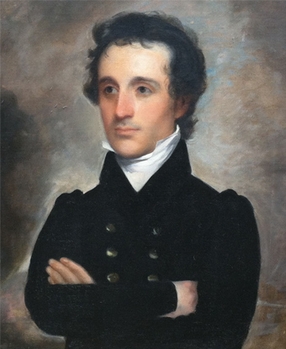
William Henry Chase was a Florida militia colonel during the events in early 1861 that led to the American Civil War. On January 15, 1861, on behalf of the State and Governor of Florida, Colonel Chase demanded the surrender of Fort Pickens at Pensacola, Florida and of its U.S. Army garrison. Chase had designed and constructed the fort while he was a captain in the United States Army Corps of Engineers. Lieutenant Adam J. Slemmer, commander of the fort, refused the surrender demand. An informal truce between the administration of President James Buchanan and Florida officials, including their still sitting U.S. Senators, avoided military action at Pensacola until after the Battle of Fort Sumter in April 1861.
Hurricane is an unincorporated community in Baldwin County, Alabama on the Tensaw River about 12 miles (19 km) north of Spanish Fort, Alabama.
The Florida Gulf and Atlantic Railroad is a Class III railroad owned and operated by RailUSA in the Florida Panhandle. The line consists of 430 miles of track running from Baldwin, Florida west through Tallahassee to Pensacola. The line also has a short branch from Tallahassee north to Attapulgus, Georgia. The line connects to CSX lines in Baldwin, Pensacola, and Attapulgus.
The Alabama legislature chartered the Alabama and Florida Rail Road Company in February 1850. The Congress of the United States in legislative session authorized the grant of public lands to the company in May 1856. The Alabama legislature consolidated the Mobile and Great Northern Railroad Company and the Alabama and Florida Railroad Company into the Mobile and Montgomery Railroad Company in 1868.
References
- Turner, Gregg M. (2008). A Journey into Florida Railroad History. Gainesville, Florida: University Press of Florida. ISBN 978-0-8130-4149-0.